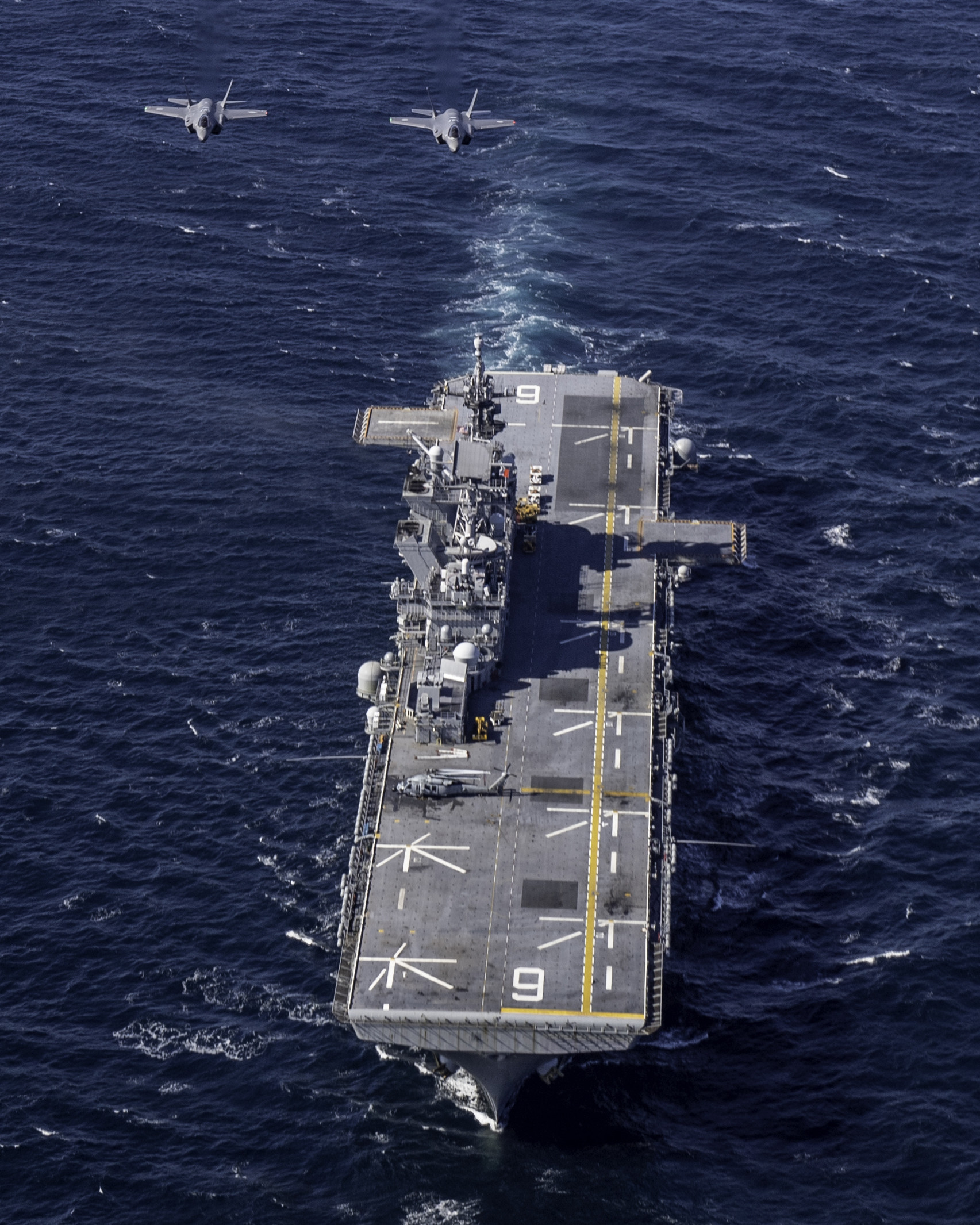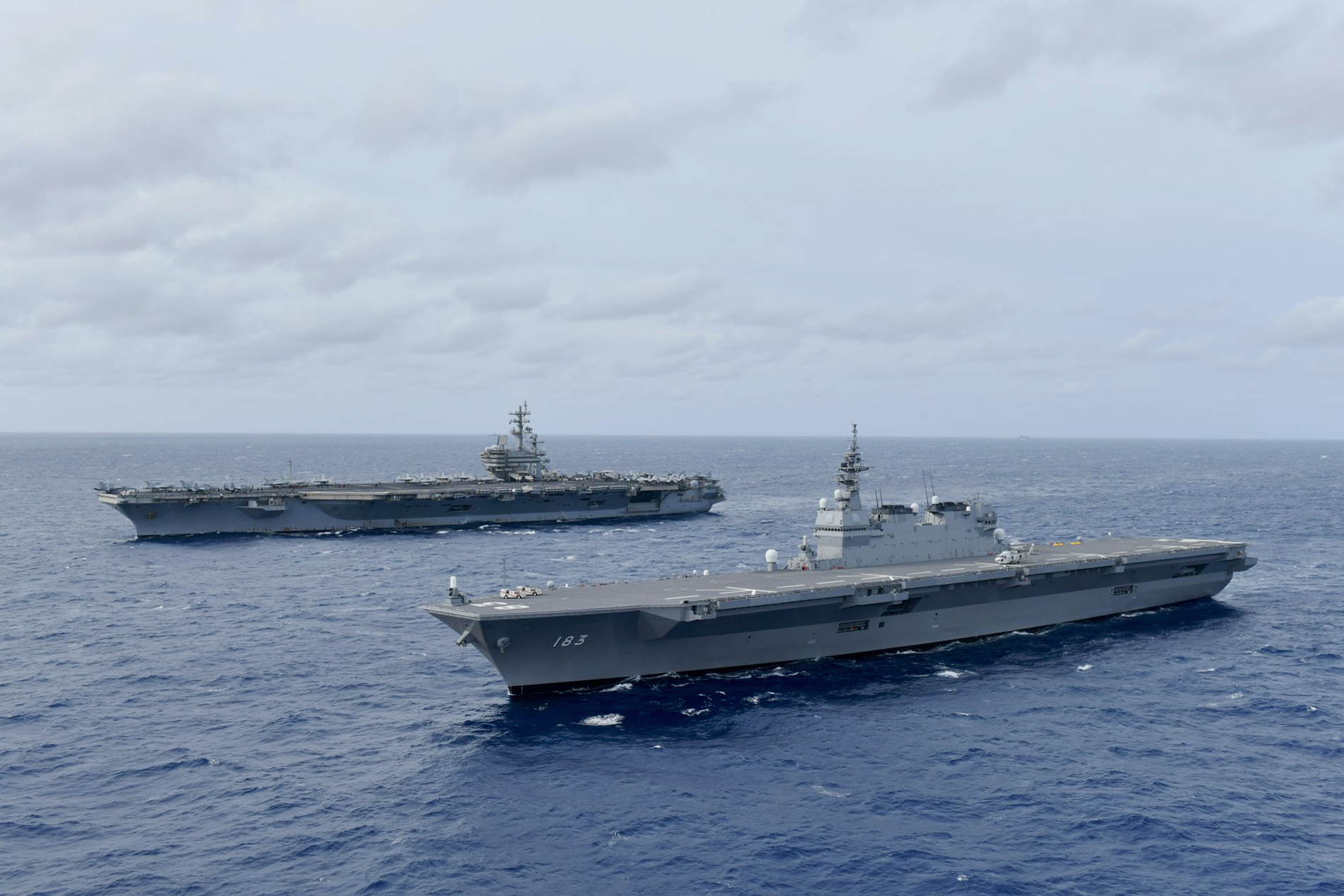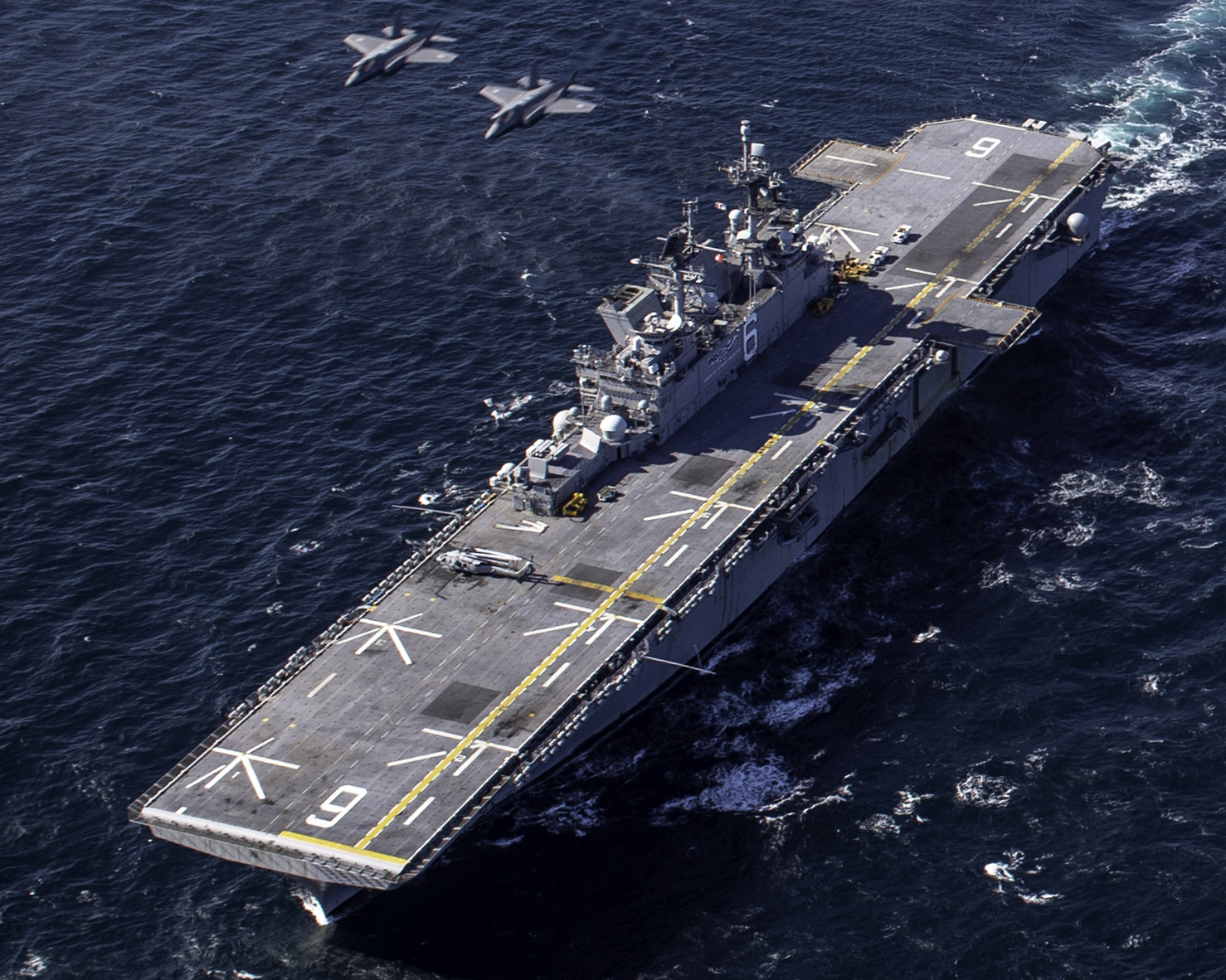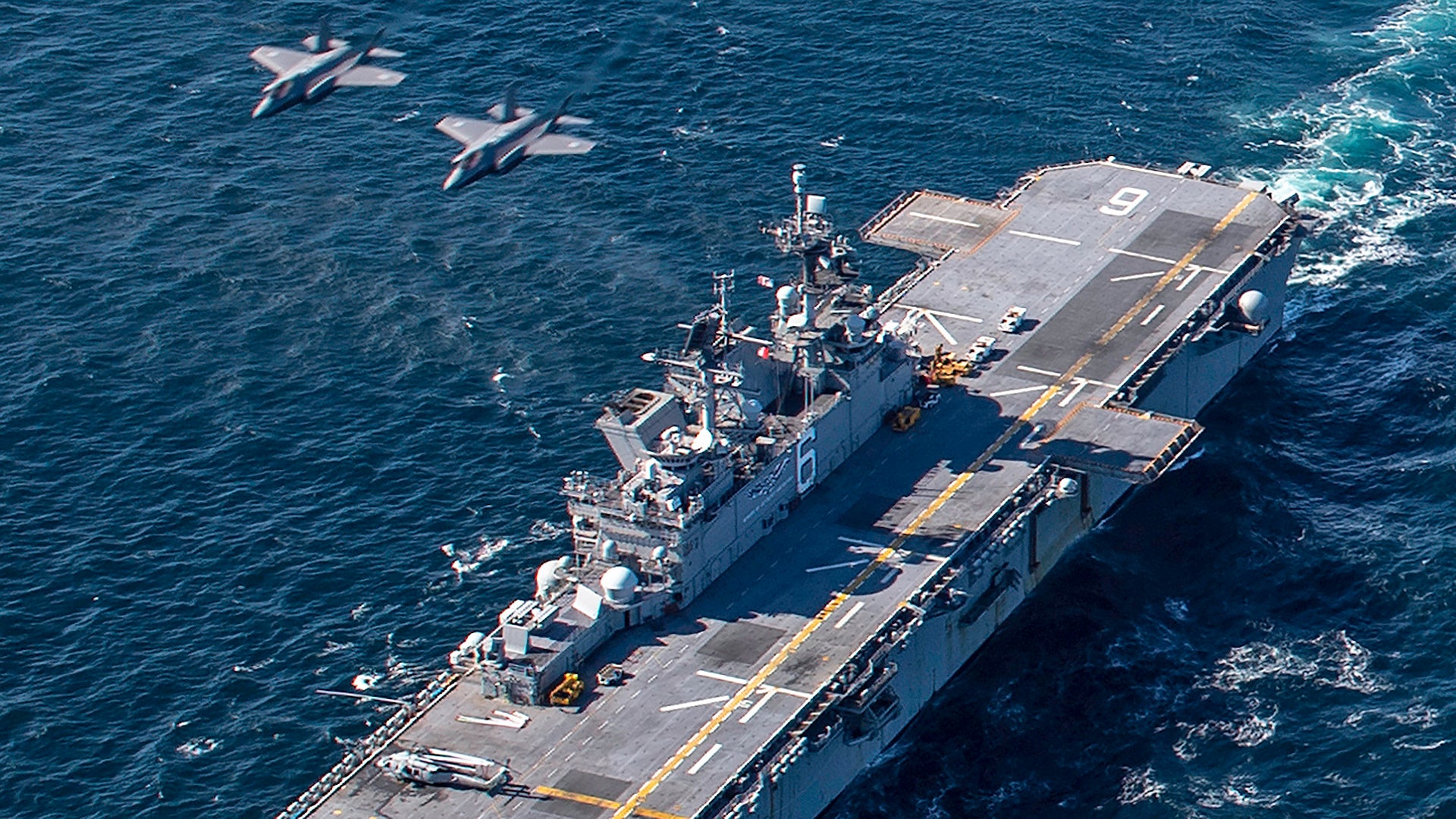Land-based Japanese F-35As trained alongside the U.S. Navy’s first-in-class amphibious assault ship USS America (LHA-6) in the western Pacific during “advanced combined operations” earlier this week. The integrated air defense training involving Japanese and American forces comes as Japan works toward its own future carrier capability using the Joint Strike Fighter.
According to a press release issued by the public affairs division on the USS America, the maneuvers “were designed to increase the tactical proficiency, lethality and interoperability of the amphibious forces of the America Expeditionary Strike Group and the Japan Air Self-Defense Force (JASDF) in the maritime domain.” The ship is homeported in Japan and is presently conducting operations in the Western Pacific region.
“The U.S.-Japan alliance has been the cornerstone of stability and security in the Indo-Pacific for more than sixty years,” said Navy Captain Luke Frost, the commanding officer of USS America. “We have no more capable partner in the world than the Japan Self-Defense Force. Every opportunity we have to continue to train and exercise together improves our interoperability and strengthens our joint integrated capabilities.”
“The training proved to be a very significant opportunity for us,” said Japanese Colonel Shinichi Nomura, a flight group commander with the JASDF’s 3rd Wing. “Training with assets of other services is essential to improve interoperability and joint operations capability.”

The U.S.-Japan exercise in the western Pacific saw the participants run through tactics, techniques, and procedures for operating the F-35A in air defense and sea control missions. Operating over water is a routine occurrence for Japan’s fighter jets and one JASDF F-35A was lost in a fatal accident over the Pacific during a sortie from Misawa Air Base in April 2019.
To date, the JASDF has received only conventional take-off and landing (CTOL) F-35A variants of the Joint Strike Fighter. Based on the available imagery, at least two of these jets were involved in this recent training event, which took place on October 20, 2020.
In the future, however, Japan will receive the short take-off and vertical landing (STOVL) F-35B model, which it intends to take to sea aboard adapted Izumo-class warships. Japan initially referred to these vessels as helicopter destroyers but they’re actually far closer in concept to light carriers.
In fact, officials from the Japanese Ministry of Defense later admitted that the Izumo-class helicopter destroyers were always designed with accommodating fixed-wing STOVL jets in mind, as The War Zone outlined in this previous article.

Earlier this year the U.S. State Department approved the possible sale of 42 F-35Bs to Japan. These are just part of a much bigger proposed deal that would see Japan acquire a total of 147 Lightning IIs, making it the second-biggest operator of the F-35 after the United States.
With these plans in mind, there is a strong likelihood we will see Japanese F-35Bs increase their cooperation with big-deck U.S. Navy assault ships and the Marine F-35Bs they carry, in the future. This kind of combined training could help the Japanese work up their own deck proficiency before going aboard the two modified Izumo-class warships.
In Europe right now, U.S. Marine Corps F-35Bs are assisting the British Royal Navy aircraft carrier HMS Queen Elizabeth as the warship works toward a first operational cruise next year. In the British case, as The War Zone examined in detail here, the Marines are helping boost the numbers of fixed-wing aircraft on deck, while crews exchange experiences of shipborne STOVL operations with their U.K. counterparts.
A similar arrangement with Tokyo might involve Japanese F-35Bs first going to sea aboard U.S. Navy amphibious assault ships and working alongside U.S. Marine Corps F-35Bs before these same jets go aboard the Izumo-class vessels.
The Japanese may be particularly eager to engage with the U.S. Marine Corps. The Marines are presently examining the potential of the “Lightning carrier” concept, which involves amphibious assault ships operating more as light aircraft carriers with large numbers of Joint Strike Fighters, which we previously discussed in depth here. Japan’s pilots may have their own lessons learned and best practices to share based on the experience they are developing now using the F-35A in the naval air defense and sea control roles.
The F-35, in particular, also has plenty to offer as a force-multiplier for a warship equipped to deal with the type, thanks to its significant electronic intelligence gathering capabilities, advanced sensors, data fusion, and networking capabilities. In this way, the jet could increase the ability of Japanese and U.S. forces to work together cooperatively during a crisis.

The latest maneuvers also reflect the deepening U.S.-Japanese naval cooperation in the Pacific, where China’s military forces are increasingly flexing their muscles. Last summer, U.S. and Japanese armed forces teamed up with those of Australia for a huge trilateral exercise in the Indo-Pacific region.
As well as pointing toward the potential for Japanese F-35s and U.S. Navy amphibious assault ships to work together in the future, this week’s exercise also demonstrates that U.S.-Japan maneuvers in the Pacific are increasing in complexity and potency, especially in view of China’s growing military presence in the region.
Contact the author: thomas@thedrive.com
